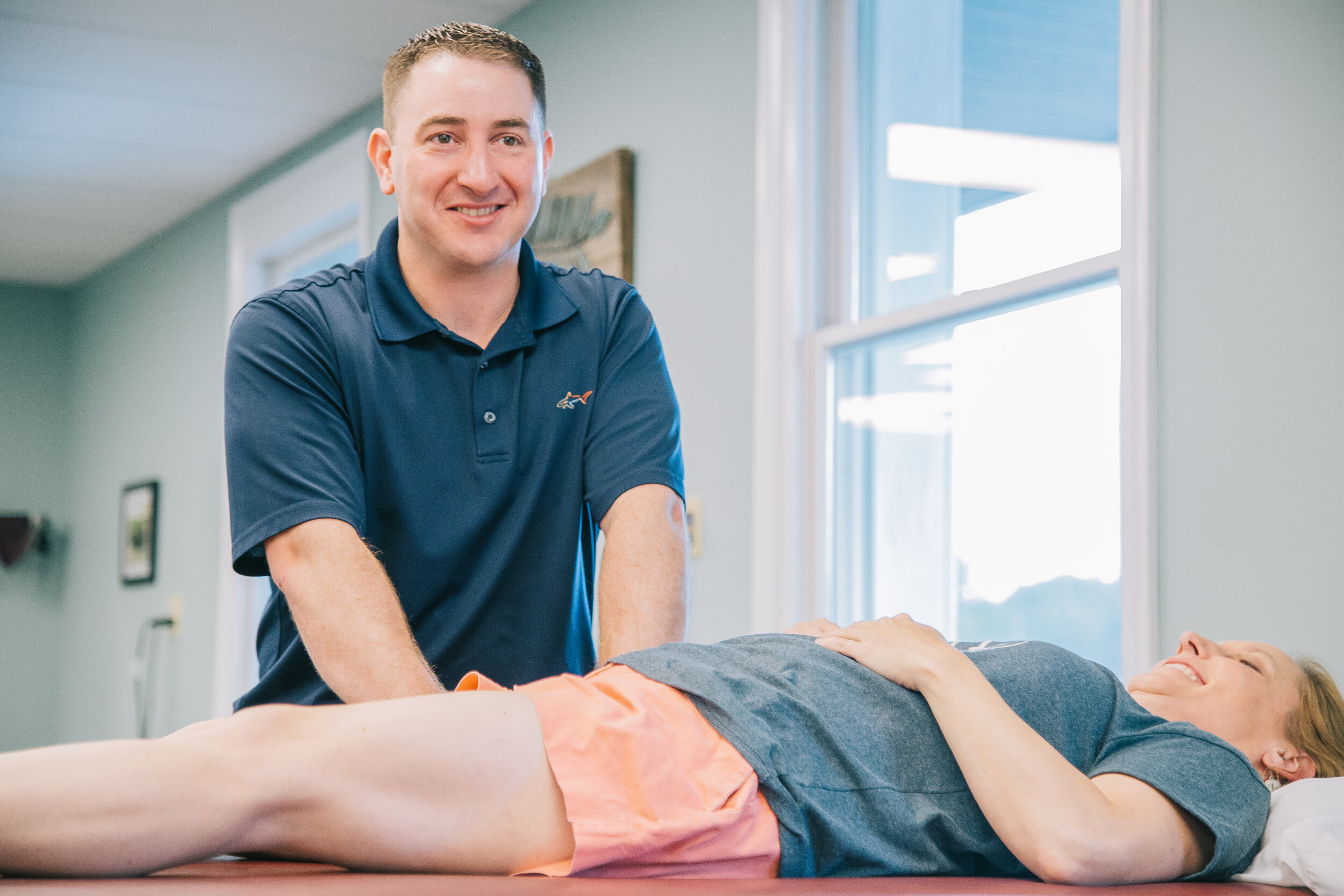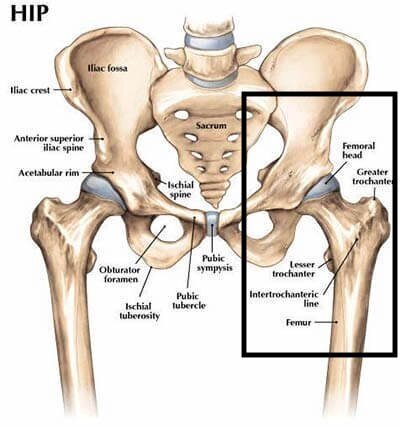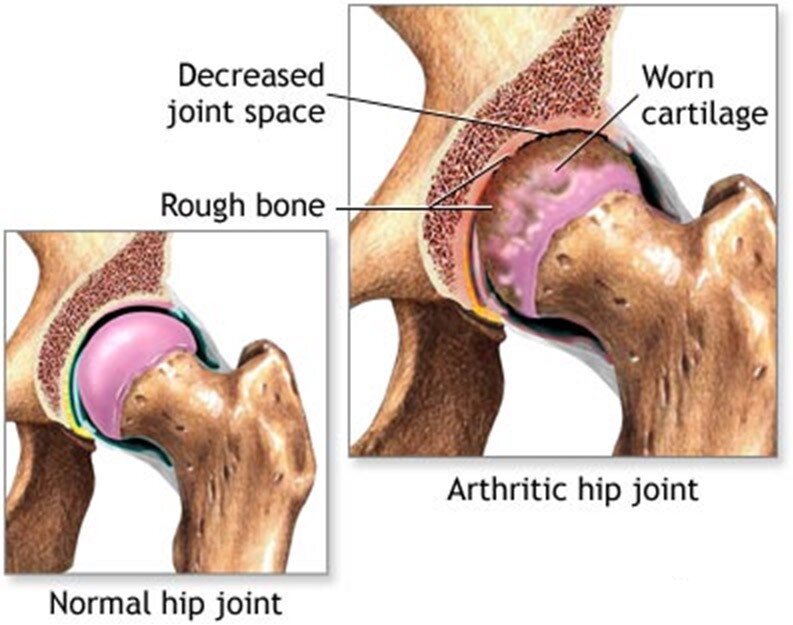It is estimated that about 40% of the population will experience hip pain at some point in their lives. Here are a few common causes!
The hip is a very complex joint that is made up of the femur (“thigh bone”) and acetabulum or a socket formed in your pelvic bone. In addition to these two structures the entire lumbopelvic complex including your lumbar spine, sacroiliac joint, and hip joint all influence hip mobility and work together to produce movement throughout the hip. The hip is a traditional “ball and socket” joint that is generally very stable due to a deep socket and a labrum that helps to create a suction or seal around the joint further enhancing the stability of the hip. There are a wide variety of pain-causing conditions that can occur in the hips but for the purposes of this article, we are going to focus on generalized arthritis within the hip, hip impingement/labral tears, and soft tissue injuries to the hip.
Hip Arthritis: arthritis in the hip typically occurs when the cartilage between the head of the femur and acetabulum wears down. The cartilage wear generally happens gradually over time and is not associated with a traumatic injury. Hip arthritis can manifest itself as loss of joint mobility, feelings of stiffness after inactivity, and specifically usually causes pain in the front of the hip and into the groin.
In this illustration of hip arthritis, you can see the wear and tear on the right of what should be smooth hyaline cartilage (as shown to the left) designed to provide cushioning and lubrication to the hip joint.
Labral tears of the hip & hip impingement: the labrum in your hip helps to act as a gasket to increase the stability of the hip joint and can become injured in traumatic injuries (athletic injuries, car accidents, falls, etc.) or by bony abnormalities of the hip joint such as those seen with hip impingement. Femoroacetabular Impingement or FAI is when there is a bony abnormality of some part of the hip joint usually either the ball or the socket and this bony abnormality then causes the labrum to be pinched, irritated, and overtime tear. Symptoms of these issues include pain in the front of the hip and groin as well as clicking or catching within the hip that is usually painful. Depending on the type or location of the impingement or labral tear there will also be loss of motion and pain at the end-ranges of motion.
Soft tissue injuries of the hip: the hip is the lower extremities attachment to the core and is under constant stress in every day and athletic activities. There are numerous muscles that attach to or surround the hip including all of the glute muscles, your quads, hip flexors, hamstrings, and groin muscles. If there is an underlying muscle imbalance or weakness it is not uncommon to experience an overuse syndrome of one or more of these muscle groups.
Diagnosis and treatment of the hip can accurately be performed by an orthopedic doctor who specializes in these types of conditions but can also be done by one of our skilled PTs at Lattimore PT. By utilizing “direct access,” if you have hip pain we are able to see you right away. We are able to examine your hip and come up with an accurate diagnosis or refer to the orthopedic if we deem necessary. As we stated the hip is a complex joint and many times hip pain can be caused from the hip itself or the low back or core imbalance.
If you are having hip pain don’t delay, we are able to help! Visit our locations tab to find the clinic closest to you or call 1–888-PT-ROCHS today to schedule your evaluation with a compassionate and highly skilled Lattimore PT to help “make you feel good again!”






